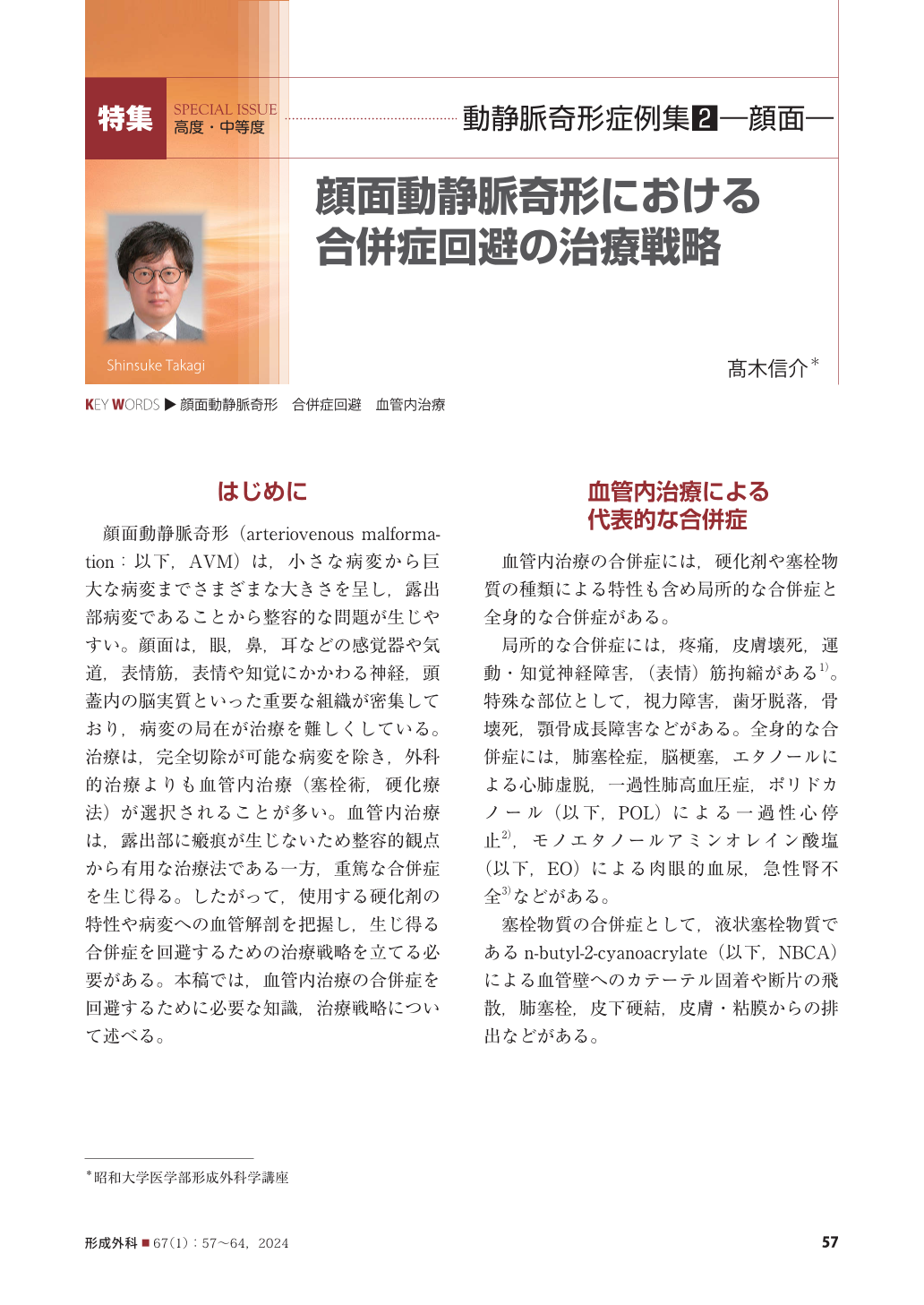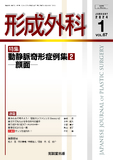Japanese
English
- 有料閲覧
- Abstract 文献概要
- 1ページ目 Look Inside
- 参考文献 Reference
はじめに
顔面動静脈奇形(arteriovenous malformation:以下,AVM)は,小さな病変から巨大な病変までさまざまな大きさを呈し,露出部病変であることから整容的な問題が生じやすい。顔面は,眼,鼻,耳などの感覚器や気道,表情筋,表情や知覚にかかわる神経,頭蓋内の脳実質といった重要な組織が密集しており,病変の局在が治療を難しくしている。治療は,完全切除が可能な病変を除き,外科的治療よりも血管内治療(塞栓術,硬化療法)が選択されることが多い。血管内治療は,露出部に瘢痕が生じないため整容的観点から有用な治療法である一方,重篤な合併症を生じ得る。したがって,使用する硬化剤の特性や病変への血管解剖を把握し,生じ得る合併症を回避するための治療戦略を立てる必要がある。本稿では,血管内治療の合併症を回避するために必要な知識,治療戦略について述べる。
Facial arteriovenous malformations (AVMs) can range in size from small to massive lesions, and being exposed lesions, they are prone to cosmetic problems. The localization of the lesion can make its treatment difficult because the face is a collection of important tissues, including sensory organs such as the eyes, nose, and ears; airways; facial muscles; nerves involved in facial expression and perception; and intracranial brain parenchyma. Endovascular treatment (embolization, sclerotherapy) is often the treatment of choice over surgical treatment, except for lesions that can be completely resected. While endovascular treatment is useful from a cosmetic standpoint because it does not cause scarring of the exposed area, it can lead to serious complications. It is thus important to evaluate each patientʼs pathophysiology using various imaging modalities during the preoperative examination and to understand the vascular anatomy and develop a treatment strategy using the appropriate approach, sclerosing agents, and doses of embolizing material in order to avoid complications.

Copyright© 2024 KOKUSEIDO CO., LTD. All Rights Reserved.


